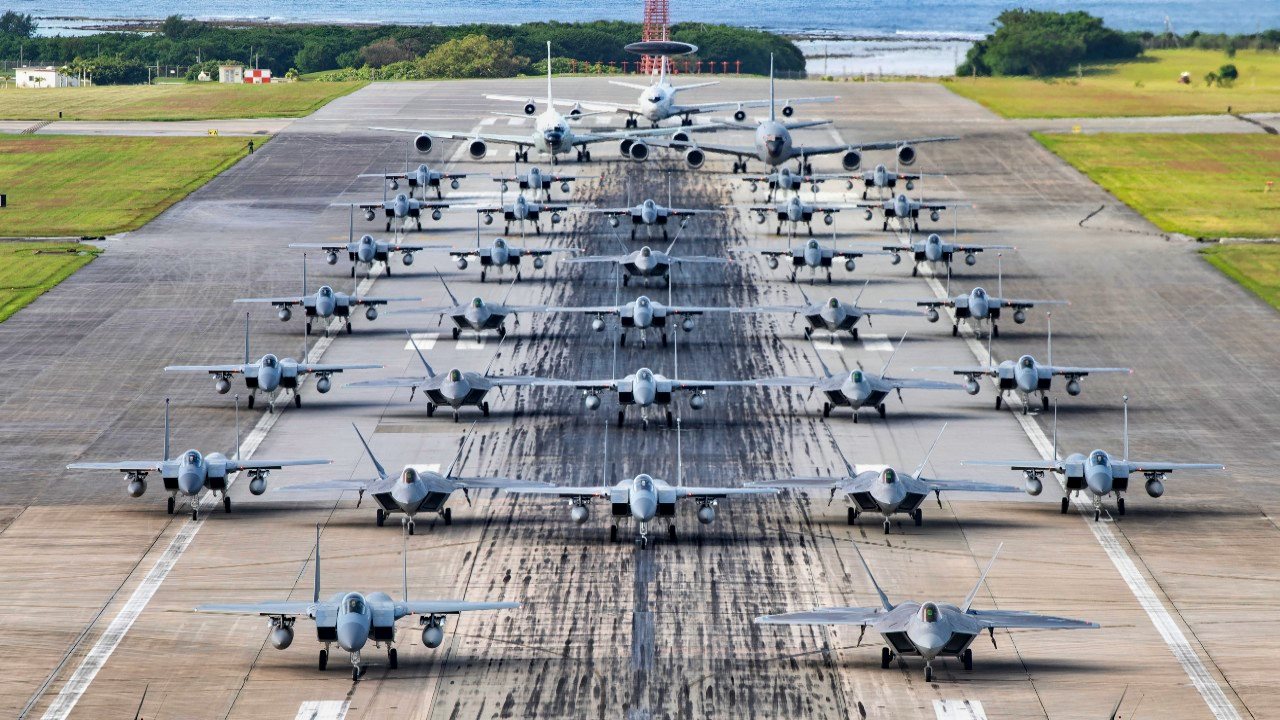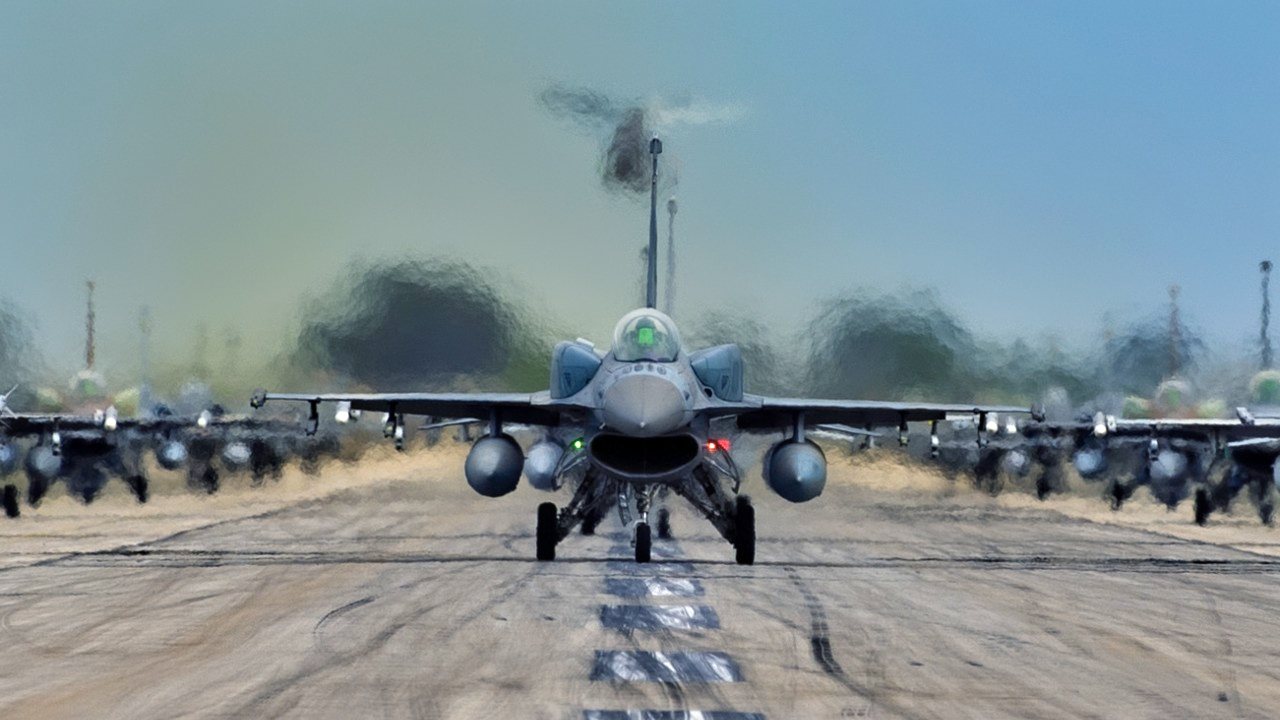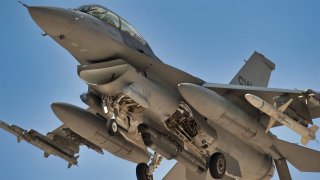Is the U.S. Air Force Getting Too Old?
The U.S. Air Force is getting old and fast. Even a nearly $1 trillion defense budget won't guarantee dominance against China or Russia in a war.
The US Air Force (USAF) possesses a dazzling lineup of aircraft. Everything from the U-2 Dragon Lady to the A-10 Warthog. The C-130 Hercules and the KC-135 Stratotanker. The F-15 Eagle, F-16 Fighting Falcon, F-22 Raptor. The F-35 Lightning II.
By roughly any metric – quantity, quality, variety, specialization – the US Air Force has accumulated the most impressive and capable collection of aircraft in human history.
Yet, despite the USAF’s impressive spread, concerns are mounting that the fleet is out of date – too old to participate effectively in a modern conflict, namely, a war with China.
Does the USAF need to upgrade? Or are calls for modernization just hawkish alarmism?
How Much Spending for the U.S. Military?
Given the extensity of the existing fleet – and given the costs of modernizing – the idea that the USAF would need to substantially upgrade its fleet is concerning to anyone mindful of US military spending (or the federal deficit).
The simple fact is that the US spends more on defense than any nation on Earth. Actually, it’s not even close: the US defense budget has ballooned to $900 billion per year, threatening to eclipse the $1 trillion threshold.
Meanwhile, the only country that even comes close to approaching the US in defense spending – China – spends less than $300 billion per year in defense, about a third of the US total. So, the US spends about three hundred percent more than it’s closest competitor in defense spending.
Russia, long the primary bogeyman of US foreign policy, spends less than one-tenth of the US defense budget – and Russia ranks third in world defense spending.
The United Kingdom, Germany, and France – six, seven, and eight on the world defense spending rankings, respectively – spend less than $200 billion per year, combined.
The point is that the idea that America’s lavish defense spending may not have been sufficient to keep pace with the modern threat environment is disheartening.
Time to Modernize the U.S. Air Force?
“Air Force Secretary Frank Kendall insists the service needs to modernize rapidly to face the threat of China,” Chris Gordon reported. “But modernization does not just mean fielding new aircraft, Kendall and other service leaders argue – the Air Force also needs to retire its aging airplanes.”
“The truth is the Air Force needs things like electric warfare, battle management, intelligence, cyber capabilities, all of these things,” Kendall said last year. “It doesn’t just need airplanes.” Kendall elaborated that, “as the character of warfare changes,” systems like electric warfare, battle management, et cetera, will become increasingly important, likely competing with “traditional platforms.”
“We’re having to divest some of [traditional platforms] to free up resources to move forward,” Kendall said. “There’s been resistance to that in the past.”
Kendall is referring, in large part, to the increasing sophistication of air defense systems and the resultant inadequacy of legacy fighters – like the F-15 and F-16, which make up the bulk of the USAF fighter fleet – to operate against those air defense systems.
But, most of the US fleet requires that air superiority has been established to operate successfully. Otherwise, modern radar, modern SAMs, and modern air superiority fighters would pick off the US’s fourth-generation fighters (and support aircraft, of course).
What the US needs is aircraft that can operate against sophisticated air defense systems. That means stealth aircraft to evade detection. And it means aircraft with radar and missile systems advanced enough to compete against fifth-generation fighters.
The US does have aircraft meeting the above description. The F-22 Raptor is still the world’s preeminent air superiority fighter. And the F-35 is the world’s preeminent fighter with respect to radar, data fusion, situational awareness, and interconnectivity. But legacy equipment still makes up the majority of the USAF fleet – a force composition that US war planners are beginning to address.
“In fiscal 2024, the Air Force plans to retire 310 aircraft, including even more A-10s and E-3s, as well as 32 older F-22s,” Gordon wrote.

“I know it’s hard, locally, in particular, to divest aircraft,” Kendall said, referring to the reluctance of lawmakers to retire aircraft and in effect take away jobs and resources from local constituents.
“If it can, Kendall said, the Air Force wants to replace retired aircraft with similar systems, such as replacing an aging fighter unit with new fighter aircraft,” Gordon wrote. “If not, Kendall said the Air Force wants to convince lawmakers that a new unit something with “longevity.”

“These are operating problems we have to solve to be able to be effective against the threat that is emerging and moving forward fairly rapidly,” Kendall said. “China is not wasting any time.”
About the Author: Harrison Kass
Harrison Kass is a defense and national security writer with over 1,000 total pieces on issues involving global affairs. An attorney, pilot, guitarist, and minor pro hockey player, Harrison joined the US Air Force as a Pilot Trainee but was medically discharged. Harrison holds a BA from Lake Forest College, a JD from the University of Oregon, and an MA from New York University. Harrison listens to Dokken.
All images are from Shutterstock.

